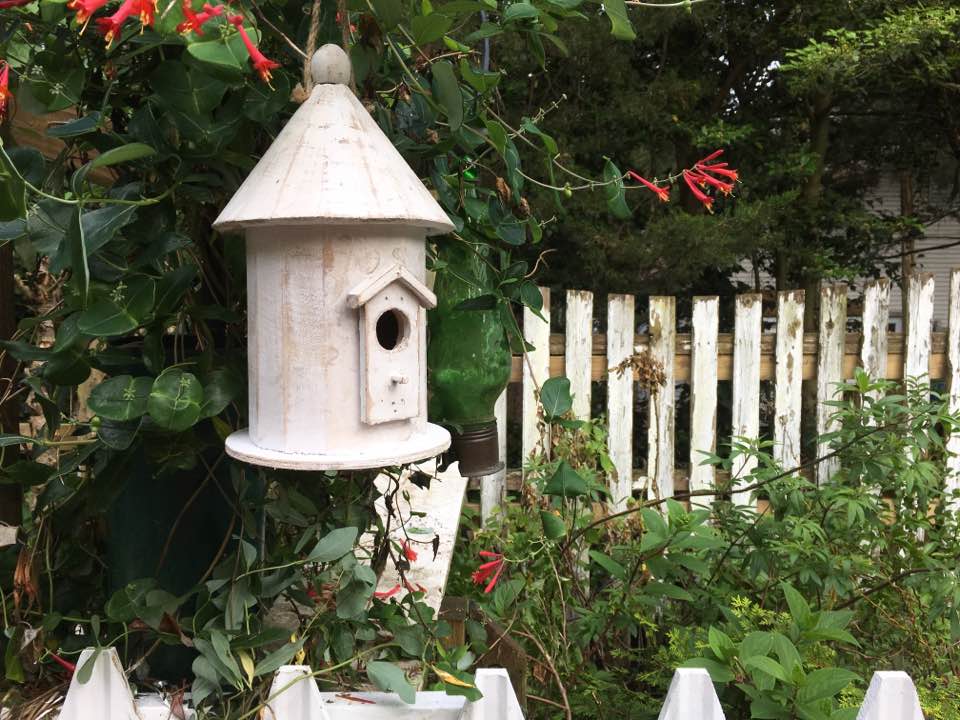
Coral Honeysuckle – Image Credit Wikimedia

Coral Honeysuckle Jacki Kellum Garden 2017
In 2023, I moved to a house in Mississippi that was devoid of a garden, and I have been working overtime, trying to solve that problem. In about August, a friend thrilled me with the gift of a Coral Honeysuckle. I had not had one of those plants since I left New Jersey in 2018.
I am happy to report that Coral Honeysuckle is a Mississippi Native plant, but it is native to most areas east of the Mississippi River. I’ve read that it is native to parts of Canada, too. Something about that assures me that this plant has a strong will to live, and today, I planted my vine in its forever spot in my Mississippi garden.
While the common yellow honeysuckle is invasive, Coral Honeysuckle is much better behaved, and hummingbirds love it. I love what the Mississippi horticulturist Norman Winter had to say about this plant:
“If you are one of many gardeners wondering what native plants to put on your arbors or trellises, consider honeysuckle.
“Mention the word honeysuckle, and many people get as irritated as they do when imagining bamboo or kudzu in their gardens. Of course, most are thinking of the Japanese honeysuckle, Lonicera japonica.
“Japanese honeysuckle is a plant scourge, able to leap small buildings and swallow cars whole. Well, would you at least believe that it can spread up to 150 feet?
“Don’t get red-faced in frustration, thinking of how you’ve seen honeysuckle invade a landscape, but do think about red. The coral honeysuckle also called trumpet honeysuckle, Lonicera sempervirens, is native throughout most of the United States and is even found in Canada. It is sold at nurseries yet has now crept up on some endangered lists.
“This is the well-behaved honeysuckle that offers so much for the landscape and backyard wildlife habitat. Now, it can climb, but it usually grows no higher than 20 feet tall. That’s a good height for an arbor or trellis. Going vertical adds so much to a garden, and the spread can make an impact without being the least bit rampant.
“The trumpet-shaped blossoms of the coral honeysuckle are a real treat for ruby-throated hummingbirds as well as butterflies. The flowers produce fruit relished by birds like the cardinal and purple finch.
“Coral honeysuckle can tolerate full sun but performs well in areas of afternoon shade. It also tolerates a wide variety of soils….
“In a typical garden, good companion plants include coreopsis, shasta daisies or Victoria Blue salvia. For a lush, tropical feel, cluster bananas nearby and perhaps a clump of cannas or Louisiana iris.
“Typically the native coral honeysuckle is a fiery red to orange with yellow on the inside. But there are named selections that you might get lucky enough to find. There is Alabama Scarlet (scarlet), John Clayton (yellow), Superba (red-coral) and Dreer’s Everlasting (bright scarlet).
“As you might expect from an environmentally friendly native, the coral honeysuckle’s needs are minimal. Don’t overfeed and do a little pruning after blooming, and you will have the proverbial green thumb.” Norman Winter, Mississippi Agriculture Extension
 Image Credit: Mississippi Department of Wildlife, Fisheries, and Parks
Image Credit: Mississippi Department of Wildlife, Fisheries, and Parks

Image Credit: Mississippi Department of Wildlife, Fisheries, and Parks
Discover more from Jacki Kellum
Subscribe to get the latest posts sent to your email.